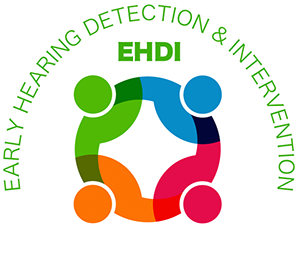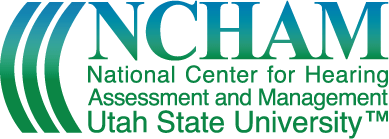Last Modified: 06/21/2023
Timely Diagnosis and Follow-up: A Resource Guide Supporting Tele-Audiology
I. Introduction
Early Hearing Detection and Intervention (EHDI) systems work to ensure that infants are screened by 1 month of age, diagnosed by 3 months of age, and connected with early intervention services by 6 months of age – known as the 1-3-6 goal. Unfortunately, some infants who do not pass their newborn hearing screening are “lost to follow up”. Loss to follow-up can be due to the difficulty in accessing an audiologist with the needed pediatric expertise. This is particularly a challenge for families who live in rural and remote areas, hours from a pediatric audiologist.
Tele-Audiology Resources
Tele-Audiology Technical Support sessions
- Introduction to Technical Support Series
- Remote Infant ABR
- Remote Cochlear Implant Mapping
- Remote Hearing Aid Programming
- Remote Site Selection and Training
- Privacy and Security
Other Resources
This barrier to accessible hearing healthcare also exists for the families of children needing ongoing audiological care. Therefore, the aim of this guide is to provide tele-audiology support to providers serving children birth to 5 years of age.
Role of Tele-Audiology
Tele-audiology (T-A) - the implementation of audiological services via telehealth technologies – has great potential to ensure that infants and children who need diagnostic and follow-up audiology services can receive them in a timely manner with ease.
Resources that describe the value of tele-audiology:
- Audiology to the People—Combining Technology and Connectivity for Services by Telehealth with De Wet Swanepoel, PhD
- EHDI 2013 presentation: The role of tele-audiology in supporting EHDI [PDF]
What is the Purpose of this Tool Kit?
The purpose of this guide is to share the lessons learned and recommendations for conducting remote audiological services with children age birth to 5 years based on the experiences of multiple professionals across the United States and in Canada.
This tool kit serves to provide practical strategies and serves as a springboard to promote the use of tele-audiology as one way to ensure hearing healthcare providers meet the needs of children and their families. The overall process for providing audiological services with children is much the same as providing in-person clinical services, with some additional steps in terms of communication, staffing, and equipment.
Telehealth Terms
- Synchronous - Live, two-way flow of information and communication between specialist and patient
- Asynchronous - Information is stored at the patient site and later forwarded to the specialist
- Hub and Spoke Model - Hub is the specialist site. Spoke is the patient and technician site; sometimes referred to as the remote site

Benefits and Challenges of Tele-Audiology
Benefits
The ultimate benefit is that children who are deaf or hard of hearing (D/HH) are identified in a timely manner and connected with needed services to promote optimal development. Specific benefits are:
- Provides access to qualified specialists
- Reduces cost to families by reducing travel time and loss of work time
- Increases number of clients that can be scheduled in a day
- Ultimately, reducing loss to follow up and increasing timely diagnosis
Challenges
Diagnostic evaluations of infants via tele-audiology has been demonstrated to be technologically feasible. However, the following challenges are significant in terms of supporting wide-spread implementation:
- Procedure can require more time due to the need to direct the assistant
- Specialist must feel confident with technology
- Some in-person follow up may be necessary
- Telehealth requires additional privacy and security procedures
- Funding and reimbursement varies by state and insurance source
- Some specialists may feel threatened by competition with telehealth
References
- Behl, D., Tharpe, A. M., Hayes, D., & Hunting, V. (2013, April 16). The role of tele-audiology in supporting access to care [Conference session]. EHDI Meeting, Glendale, Arizona, United States
- Center for Disease Control and Prevention. (2017). 2017 annual data early hearing detection and intervention (EHDI) program summary. CDC. https://www.cdc.gov/ncbddd/hearingloss/ehdi-data2017.html
- Simon, A. (2012). Interview with Anne Simon, Au.D., Senior Pediatric Audiologist, UC Davis Medical Center. AudiologyOnline. Retrieved from: https://www.audiologyonline.com/interviews/interview-with-anne-simon-au-1318
- Swanepoel, D. (2013). 20Q: Audiology to the people – combining technology and connectivity for services by telehealth. AudiologyOnline, Article 12183. Retrieved from: http://www.audiologyonline.com


